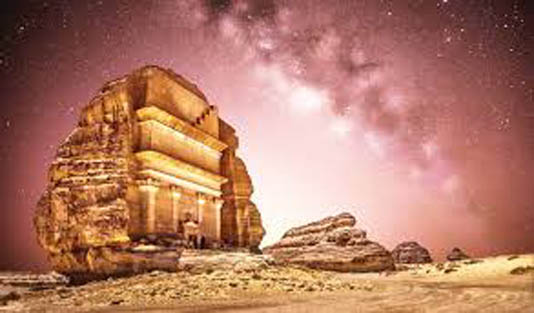RIYADH, Sept 28, 2019 (BSS/AFP) – Saudi Arabia on Friday said it was
offering tourist visas for the first time, opening up the ultra-conservative
Islamic kingdom to holidaymakers as part of a push to diversify its economy
away from oil.
The kingdom also eased its strict dress code for foreign women, allowing
them to go without the body-shrouding abaya robe that is still mandatory
public wear for Saudi women, as authorities open up one of the last frontiers
of global tourism.
The push comes just under two weeks after devastating attacks on Saudi
Arabia’s oil infrastructure — blamed by Washington on Iran — which roiled
global energy markets and raised fears of a wider regional conflict.
“We make history” today, tourism chief Ahmed al-Khateeb said before an
official gala to mark the launch in Diriyah, a historical site near Riyadh.
“For the first time, we are opening our country to tourists from all over
the world.”
Citizens from 49 countries are eligible for online e-visas or visas on
arrival, including the United States, Australia and several European nations,
the statement said.
Kickstarting tourism is one of the centrepieces of Crown Prince Mohammed
bin Salman’s Vision 2030 reform programme to prepare the biggest Arab economy
for a post-oil era.
But the conservative country, which forbids alcohol and is notorious for
sex segregation, is seen as an unlikely destination for global tourists aside
from Muslim pilgrims visiting holy sites in Mecca and Medina.
Tourism authorities have repeatedly said that Saudi Arabia will not permit
alcohol.
But Khateeb said there will be no restrictions on unaccompanied foreign
women, who will also not be obliged to publicly wear an abaya although they
will be expected to dress modestly.
Men and women must avoid “tight fitting clothing” or clothes with “profane
language or images”, read an instruction on an English language website
launched by the tourism authority.
“Women should cover shoulders and knees in public,” it said.
– ‘Saudi is opening’ –
The relative easing of the dress code for foreign women is unlikely to go
down well with Saudi women, who are required to wear an abaya in public even
though many have long demanded an end to the restriction.
In a new sign of cultural rebellion, some Saudi women have stopped wearing
the item despite the risk of provoking arch-conservatives.
Visas in the desert kingdom, endowed with rich bedouin heritage and
archaeological sites, had until now been restricted to expat workers, their
dependents and the Muslim pilgrims travelling to Islam’s holiest sites.
Riyadh last year began issuing temporary visas to visitors to attend
sporting and cultural events.
In an effort to change perceptions, Prince Mohammed has relaxed some of
the kingdom’s most rigid rules — lifting a ban on cinemas and women drivers
while allowing gender-mixed concerts and sporting extravaganzas.
“Saudi Arabia is opening. We are opening our economy. We are opening our
society,” Khateeb said.
But international criticism of the kingdom’s human rights record,
including the gruesome murder last year of critic Jamal Khashoggi and a
crackdown on female activists, could put off foreign visitors, observers say.
Fears of a regional conflict after the September 14 attacks on state oil
giant Aramco may also dampen the kingdom’s appeal to holidaymakers.
– Economic boost? –
“There are clearly interesting places to visit in Saudi Arabia,” Ellen
Wald, author of the book “Saudi Inc.”, told AFP.
“The big question is whether a significant number of tourists will feel
comfortable given the gender and religious restrictions, the lack of alcohol
and the lack of freedom of expression.”
The government on Friday said it signed memoranda of understanding worth
around 100 billion riyals ($27 billion) with regional and international
investors, including hotels and real estate developers.
Saudi Arabia, reeling from low oil prices, says it hopes tourism will
contribute up to 10 percent of Gross Domestic Product by 2030 — compared to
three percent currently — thanks to a targeted 100 million annual visits by
both Saudi and foreign tourists.
But the kingdom currently lacks the infrastructure to accomodate visitors
in such high numbers, with officials estimating 500,000 new hotel rooms will
be required nationwide over the coming decade.
The sector is expected to create up to one million tourism jobs, the
government says, as it battles high youth unemployment.
Saudi Arabia has splurged billions in an attempt to build a tourism
industry from scratch.
In 2017, the kingdom announced a multi-billion dollar project to turn 50
islands and other pristine sites on the Red Sea into luxury resorts.
Last year, construction of Qiddiya “entertainment city” was launched near
Riyadh, which would include high-end theme parks, motor sport facilities and
a safari area.
The country is also developing historic sites such as the centuries-old
Mada’in Saleh, home to sandstone tombs of the same civilisation which built
the rose pink city of Petra in Jordan.



